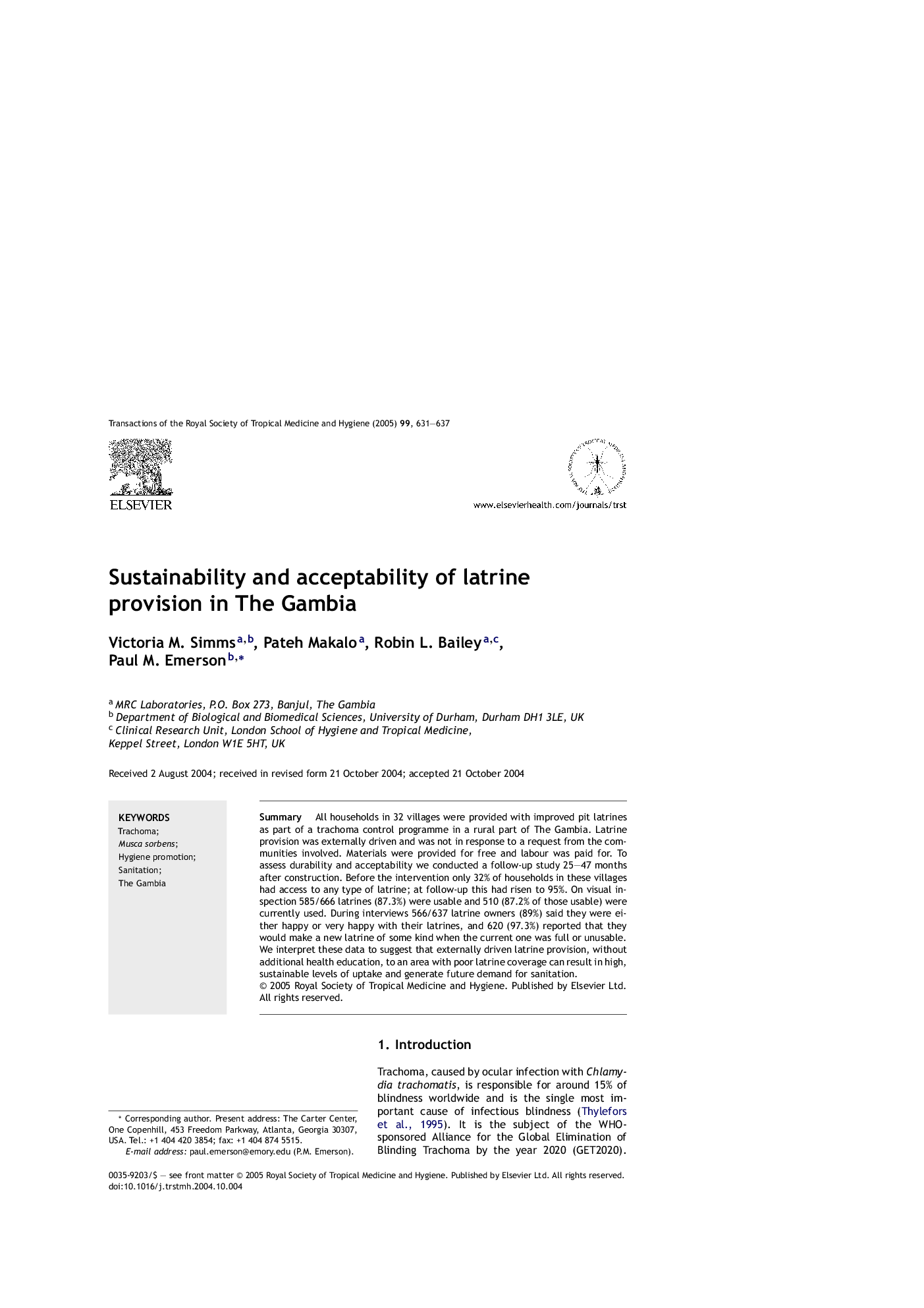| Article ID | Journal | Published Year | Pages | File Type |
|---|---|---|---|---|
| 10030550 | Transactions of the Royal Society of Tropical Medicine and Hygiene | 2005 | 7 Pages |
Abstract
All households in 32 villages were provided with improved pit latrines as part of a trachoma control programme in a rural part of The Gambia. Latrine provision was externally driven and was not in response to a request from the communities involved. Materials were provided for free and labour was paid for. To assess durability and acceptability we conducted a follow-up study 25-47 months after construction. Before the intervention only 32% of households in these villages had access to any type of latrine; at follow-up this had risen to 95%. On visual inspection 585/666 latrines (87.3%) were usable and 510 (87.2% of those usable) were currently used. During interviews 566/637 latrine owners (89%) said they were either happy or very happy with their latrines, and 620 (97.3%) reported that they would make a new latrine of some kind when the current one was full or unusable. We interpret these data to suggest that externally driven latrine provision, without additional health education, to an area with poor latrine coverage can result in high, sustainable levels of uptake and generate future demand for sanitation.
Keywords
Related Topics
Life Sciences
Immunology and Microbiology
Applied Microbiology and Biotechnology
Authors
Victoria M. Simms, Pateh Makalo, Robin L. Bailey, Paul M. Emerson,
